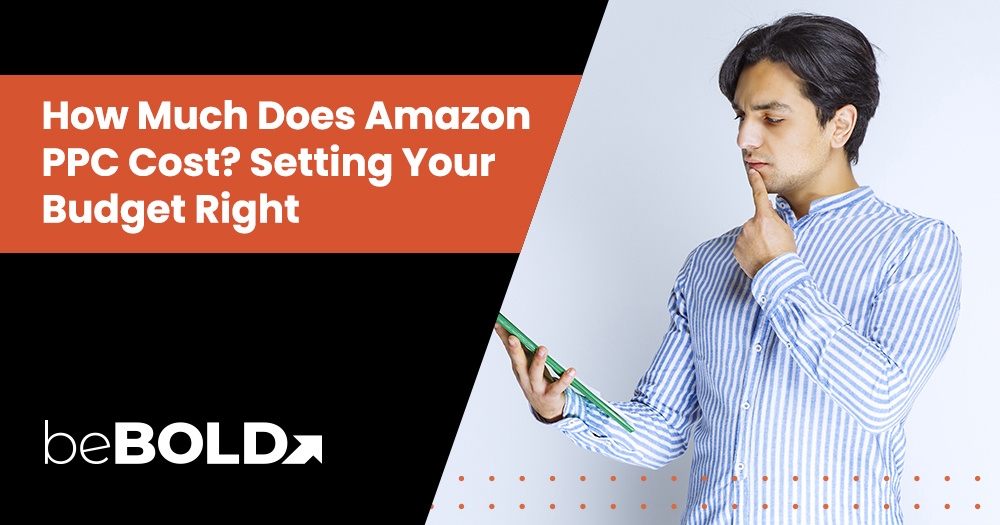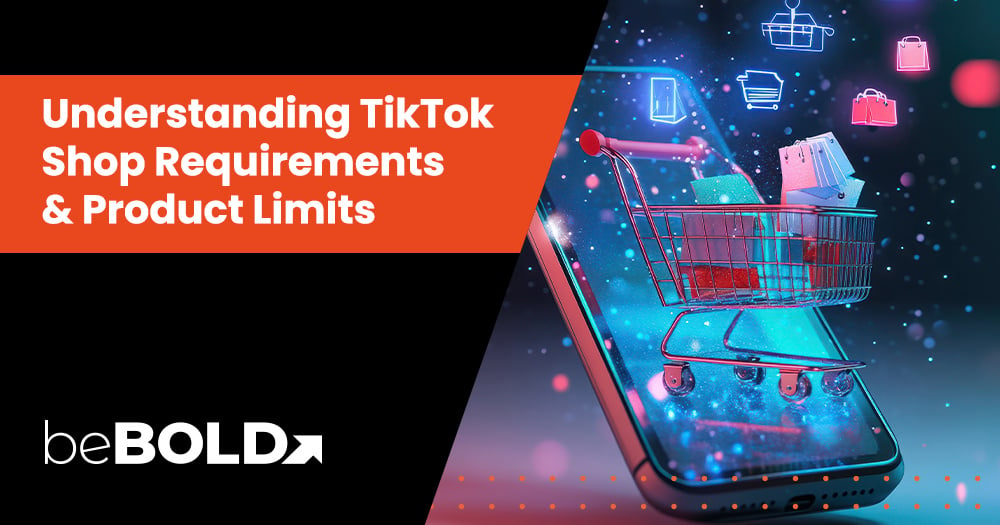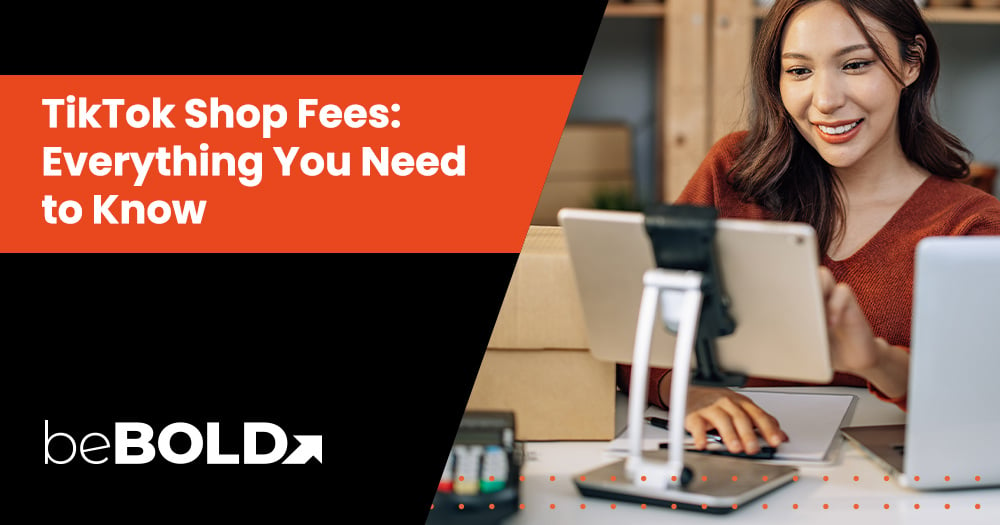As the online marketplace becomes increasingly competitive, Amazon is no exception. With countless Amazon sellers vying for customers’ attention, having a robust marketing strategy is crucial.
Amazon PPC helps sellers boost visibility and sales, but setting the right budget can be challenging, especially for new sellers.

This is where the 2.5 Rule comes into play. The rule suggests that you allocate 2.5 times your target ACoS (advertising cost of sales) as your daily budget. For example, if your target ACoS is 20%, your daily PPC budget should be set at 50% of your average daily sales (2.5 x 20% = 50%). This approach ensures you allocate enough to effectively reach your audience without overspending, while maintaining a focus on profitability.

Here’s a guide to help you understand how much Amazon PPC costs and how to set a reasonable budget.
What is Amazon PPC?
Amazon PPC (Pay-Per-Click) is an advertising model offered by Amazon that allows sellers and vendors to promote their products directly on Amazon's platform. Advertisers pay a fee each time a shopper clicks on their ad. This form of advertising helps sellers increase product visibility, drive traffic to their listings, and ultimately boost sales.
How Much Does Amazon PPC Cost?
Advertising on amazon typically costs between $0.02–$3 per click. The amount depends on several factors, such as the type of ad, the type of product, the keyword, and the other sellers you’re competing with. If you’re planning to place a bid, here are some of the costs you should consider:
Break Down of Typical Costs
Here’s a breakdown of typical advertising costs on Amazon:
|
Cost Type |
Description |
|
Cost per click (CPC) |
Cost-per-click (CPC) is the amount a seller pays Amazon each time someone clicks on one of their ads. It can vary depending on the competition for the targeted keywords and the seller’s bidding strategy. |
|
Cost per impression (CPM) |
The Cost-per-mille (CPM) model means the seller pays Amazon per thousand impressions. The ability to specify a monthly or quarterly budget and the simplicity of this model make it popular with businesses that utilize sponsored display ads. |
|
Advertising cost of sale (ACoS) |
The advertising cost of sale (ACoS) is the percentage of ad spend relative to sales. A high ACoS means advertising costs are exceeding sales, indicating an ineffective campaign. |
|
Cost per action (CPA) |
CPA (cost per acquisition) is what you pay when a customer clicks your ad and makes a purchase. Knowing this helps you gauge CPC and set future campaign budgets. |
Average CPC Ranges Across Categories
The average CPC for Amazon PPC campaigns varies significantly based on the product category. Here are some typical ranges:
|
Category |
Average CPC Range |
Description |
|
Books & Media |
$0.30–$0.75 |
Lower competition makes this one of the more affordable categories. |
|
Home & Kitchen |
$0.50–$1.50 |
A moderately competitive category with a wide range of product types. |
|
Beauty & Personal Care |
$1.50–$3.00 |
High competition drives up CPC, but the potential for high ROI makes it worthwhile. |
|
Electronics |
$2.00–$4.00 |
A very competitive category with higher costs but significant demand. |
|
Toys & Games |
$0.75–$1.50 |
Seasonal demand can affect CPC, with spikes during the holidays. |
Factors That Can Impact Amazon PPC Costs
1. Keyword Competition
Before you start promoting a product, it’s a good idea to research how many competitors you have on the website. In the beauty industry, where you’ll likely have a lot of competition, expect bids for keywords to be high. Multiple sellers targeting the same keywords can drive the advertising cost up.
2. Bidding strategy
The choice between manual and automatic bidding impacts both cost and control over campaigns. Each approach has its benefits, and selecting the right one depends on your goals and experience level. Let’s look at the different bidding strategies in the table below:
|
Bidding Strategy |
Description |
|
Manual Bidding |
Allows you to set precise bid amounts for individual keywords, offering greater control but requiring more time and expertise. |
|
Automatic Bidding |
Amazon’s algorithm dynamically adjusts bids, saving time but potentially increasing costs if not monitored. |
|
Dynamic Bidding (Down Only) |
Amazon lowers your bid when it detects a lower chance of conversion, helping to save money. |
|
Dynamic Bidding (Up and Down) |
Amazon adjusts bids both up and down based on conversion likelihood, increasing visibility but potentially raising CPC. |
|
Fixed Bids |
You manually set and maintain your bid amount, providing full control over your budget but requiring active management. |
3. Relevance
Ensure your goods and services are pertinent to the keywords you bid on. Your entire campaign must be relevant to the search terms, including the photos and product name.
4. Click-through rates
The click-through rate (CTR) is the percentage of customers who click on your item after seeing it listed in the search results on Amazon. A high CTR means that the keywords you bid on and your product may be what customers want, allowing increased sales.
5. Conversion rates
Conversion rates are the sales you generate after a customer visits your product’s ad. You likely have lower costs if your product has a high conversion rate. If your conversion rate is down, you must improve converting visitors into customers.
6. Ad Campaign Type
Your Amazon PPC campaign type affects costs. Sponsored Products usually have lower CPCs than Sponsored Brands or Display ads, which target broader audiences and cost more per click.
7. Target Audience and Ad Placement
Targeting specific audiences and premium ad placements can raise PPC costs. Higher conversion rates may justify the expense, but prime spots like top search results also increase CPCs.
8. Seasonality and Trends
Seasonal events like Black Friday drive up Amazon PPC costs as competition increases. Higher CPCs require monitoring trends and adjusting bids to manage costs effectively.
How to Calculate Your PPC Budget for Amazon?
Establishing an Amazon PPC budget is essential when you have multiple products you want to advertise. By setting up a budget, you can determine your performance and return on investment. Here’s how it works:
1. Determine your advertising goals and objectives
Amazon PPC is a great way to reach customers, but first, you need to determine your goals when participating because it will affect your budget, bid strategy, and type of ad. For instance, if you sell one product, you need to select the ad type and how many sales you want.
2. Research the costs and competition for your target keywords or ad placements
The cost of the keywords will vary depending on the industry and the website’s existing competitors. Research the average prices for the keywords related to your product and review the ads competitors commonly use.
3. Calculate a daily budget based on advertising goals and estimated costs
After researching, you have the information to plan a daily budget. Consider your objectives and the prices your competitors typically pay for similar products.
Daily PPC Budget = (Target Daily Sales) × (Target ACoS) / 100
- Target Daily Sales: This is the amount of sales you aim to generate each day through PPC.
- Target ACoS (Advertising Cost of Sales): This is the percentage of your sales that you’re willing to allocate to advertising. For example, if your target acos is 20%, you’re willing to spend 20% of your daily sales on ads.
Example:
Suppose your target daily sales are $500, and you aim for a 20% ACoS.
- Daily PPC Budget = ($500 × 20%) / 100 = $100
This means you should allocate $100 per day to your PPC campaigns.
4. Consider your budget factors
Once you have a budget, you can refine it by calculating your profit margins, conversion rate, expected ROI, and more. Depending on the maximum amount you’re willing to spend and the results of the calculations for these different factors, you may need to adjust your goals and objectives.
5. Time your campaigns
Timing your campaign to coincide with a holiday or seasonal trend can help boost sales, depending on your products. Ensure the item is relevant to the holiday or trend and doesn't feel forced.
6. Monitor your ad performance regularly
Once your campaign is up and running, monitor its performance. With the right resources, like Amazon’s reporting tools, you can track your ad spending, clicks, impressions, and conversions.
7. Balancing ACoS (Advertising Cost of Sale) with Profitability
While setting a daily budget is important, balancing ACoS with profitability is crucial. A lower ACoS (10-15%) maximizes profit by reducing ad spend relative to sales, while a higher ACoS (20-30%) can boost brand visibility and sales. Regularly monitor campaigns and adjust bids, targeting, or product listings to optimize ROI and maintain profitability.
8. Be prepared to adjust your budget and bidding strategy
You'll need to constantly adjust your budget and strategy based on the success of your campaign. Your competitors are doing their research as well, so you need to be able to keep pace with them if you want to generate revenue.
How Does Amazon PPC Work?
Amazon Pay-Per-Click (PPC) is an online advertising model where sellers pay per click to promote products and reach target audiences, boosting sales.
Click costs vary by keyword competition, and sellers can set budgets and adjust bids to optimize campaigns. When a seller searches for a relevant keyword, Amazon displays options to bid on.
The highest bidder wins the auction, placing their sponsored ad at the top of search results or product pages. The winning seller then pays a fee each time a customer clicks their ad.
There are three types of amazon PPC advertisements. These are:
1. Sponsored Products

A sponsored product is an ad that appears when you search for a specific keyword or set of keywords with the “Sponsored” tag. It appears on the top of the search results and product detail pages. The goal of this ad is to drive sales toward a specific product.
2. Sponsored Brands

Sponsored brands are like sponsored products but with a brand’s logo, headline, and up to three featured products. They aim to increase brand visibility and awareness, which can encourage customers to purchase their products.
3. Sponsored Display Ads

You can find sponsored display ads on product detail pages, customer reviews, and Amazon marketing emails. These ads aim to urge potential customers who viewed the product but didn’t buy it to go back and complete their purchase.
4. Amazon DSP (Demand-Side Platform)

Amazon DSP (Demand-Side Platform) is an advertising platform that allows advertisers to programmatically buy display video ads on Amazon and other third-party sites. It offers advanced targeting options, real-time optimization, and detailed reporting, making it a powerful tool for reaching and engaging with customers.
Amazon PPC Metrics You Must Consider
|
Metric |
Description |
|
Click-Through Rate (CTR) |
The percentage of people who click on your ad after seeing it |
|
Cost-Per-Click (CPC) |
The average cost you pay for each click on your ad |
|
Conversion Rate (CVR) |
The percentage of people who make a purchase after clicking on your ad |
|
Average Cost of Sale (ACoS) |
The ratio of ad spend to sales revenue |
|
Return on Ad Spend (ROAS) |
The amount of revenue generated for every dollar spent on advertising |
|
Total Advertising Cost of Sales (TACoS) |
This includes ad spend and other costs, providing a full view of advertising expenses. |
When it comes to Amazon PPC campaigns, analyzing these metrics is crucial in order to determine the cost of running ads on the platform. By understanding these metrics, you can make informed decisions about how to allocate your budget for maximum ROI.
5. Advertising Cost of Sales (ACoS)
ACoS metric is calculated by dividing the total ad spend by the total sales generated from the ads. This metric gives you an idea of how efficient your advertising campaigns are in terms of generating sales.
6. Total Advertising Cost of Sales (TACoS)
TACoS takes into account not just the ad spend, but also other costs associated with advertising such as agency fees or software costs. This metric gives you a more comprehensive view of the total cost of your advertising campaigns.
7. Click-Through Rate (CTR)
CTR measures the percentage of people who click on your ad after seeing it. A high CTR indicates that your ad is resonating with your target audience and is driving traffic to your product pages.
8. Conversion Rate (CVR)
CVR measures the percentage of people who make a purchase after clicking on your ad. A high CVR indicates that your ad is effectively converting clicks into sales.
9. Cost Per Click (CPC)
CPC measures the average cost you pay for each click on your ad. It's important to monitor this metric to ensure that you are getting the most value out of your ad spend.
10. Return on Ad Spend (ROAS)
ROAS is a metric that measures the revenue generated for every dollar spent on advertising. A ROAS of 5:1, for example, means that for every $1 spent on advertising, you generate $5 in revenue. This metric helps you determine the overall effectiveness and profitability of your advertising campaigns.
Effective Strategies to Lower Amazon PPC Costs

Amazon PPC boosts traffic and sales, but optimization prevents overspending. With the right strategies, you can reduce CPC and improve ROI. Below are effective ways to lower costs without losing visibility or sales.
1. Target Long-Tail Keywords
One effective strategy to lower Amazon PPC costs is to target long-tail keywords. Long-tail keywords are more specific and generally have less competition, which can lead to lower costs per click.
2. Use Single Keyword Campaigns (SKAGs)
Another way to reduce Amazon PPC costs is to use Single Keyword Ad Groups (SKAGs). By creating separate campaigns for each keyword, you can better control your bids and budget, leading to more cost-effective campaigns.
3. Organize by Match Type
Organizing your keywords by match type, such as exact, phrase, and broad match, can also help lower Amazon PPC costs. By separating these match types into different ad groups, you can adjust your bids and budget more effectively.
4. Bid Strategically
Bidding strategically on your keywords can also play a significant role in impacting your Amazon PPC costs. By analyzing your data and adjusting your bids based on performance, you can optimize your campaigns for lower costs and better results.
5. Reduce Off-Hours Spending
Reducing spending during off-peak hours can also help lower Amazon PPC costs. By adjusting your ad scheduling to focus on peak shopping times, you can maximize your budget and increase your ROI.
6. Optimize Product Listings
Optimizing your product listings can also impact your Amazon PPC costs. By improving your product titles, descriptions, and images, you can increase your click-through rates and conversion rates, leading to lower ad costs.
7. Leverage Negative Targeting
Utilizing negative targeting can be another effective strategy to lower Amazon advertising costs. By excluding irrelevant keywords or targeting options, you can ensure that your ads are only shown to the most relevant audience, reducing wasted spend.
8. Choose Cost-Effective Ad Types
Choosing cost-effective ad types, such as Sponsored Products or Sponsored Brands, can also help lower Amazon PPC costs. By selecting the ad types that align best with your goals and budget, you can optimize your campaigns for better results.
9. Avoid Low-Converting Competitor ASINs
Avoid targeting low-converting competitor ASINs, as they can waste your budget with poor ROI. Instead, focus on high-converting, relevant ASINs with a strong sales track record.
10. Reduce Overlapping Ads
To control Amazon PPC costs, avoid overlapping ads that target the same keywords or products, driving up costs. Manage campaigns carefully to prevent redundancy and maximize ROI.
Boost Your Amazon Advertising ROI with beBold Digital!
Are you finding it challenging to get the most out of your Amazon advertising campaigns? At beBold Digital, we excel in creating and optimizing strategies for Amazon Advertising, including Sponsored Products, Sponsored Brands, and Sponsored Display Ads.
Our team of experts uses data-driven insights to fine-tune your bidding strategies, enhance ad targeting, and manage budgets efficiently. Ready to elevate your Amazon game and maximize your ROI? Let beBold Digital take the lead—Let’s get started!
Conclusion
Determining Amazon PPC costs involves factors like bidding strategy, competition, and campaign goals. Set a budget that aligns with your objectives for maximum ROI. Analyze your audience, track performance, and adjust your budget to optimize campaigns. Remember that the cost of Amazon PPC can vary greatly depending on these factors, so it is crucial to continuously evaluate and refine your budget to achieve the best results.
Frequently Asked Questions
1. What is a good starting point for a daily or monthly Amazon PPC budget?
Start with a budget that provides enough data, aiming for 20-30 clicks daily. Use Amazon’s suggested bid to gauge competitor bids and estimate your niche's CPC for a solid PPC budget.
2. How does bid strategy affect Amazon PPC costs, and which strategy should I choose?
Your bid strategy affects Amazon PPC costs. Manual bidding offers more control but takes time, while automatic bidding saves time but reduces control. Choose based on your goals and budget.
3. What are negative keywords, and how do they impact Amazon PPC costs?
Negative keywords prevent your ads from showing for irrelevant terms, helping reduce Amazon PPC costs. For example, a shoe seller might exclude “socks” or “hats.”
4. Is there a recommended ACoS for Amazon PPC campaigns?
The ideal ACoS varies by goal and budget. Start with 50% or less and adjust as you gain experience.
5. Can I set a monthly cap for my Amazon PPC spending?
Yes, you can set a monthly cap for Amazon PPC to control costs. Go to the Advertising console, select “Campaign Settings,” then “Budget,” and enter your amount.
If you’re looking for an Amazon agency or beauty marketing agency, consider beBold Digital. From Amazon PPC to account management and more, our team can provide the solutions you need to stand out on the platform. Contact us today!









Comments